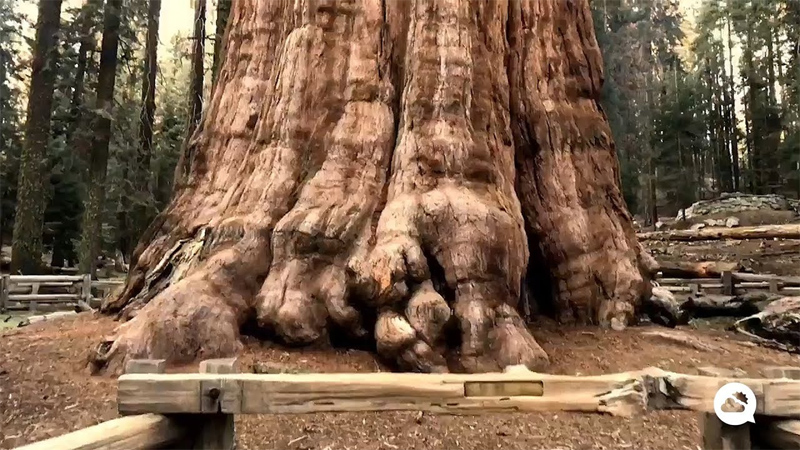Even if you’ve never been to California, you’ve undoubtedly heard of and seen pictures of the Giant Sequoias. These amazing and ancient trees are one of the great wonders of the natural world. However, when planning your visit to California to see them, be aware that there are technically two different parks – Sequoia National Park and Kings Canyon National Park – each with much to recommend them.
Sequoia is famous for some of the largest trees in the world. However, where these trees cannot grow, there are thick forests of pine and fir. Paths lead through these forests and meadows; longer treks rise above the tree line to the barren peaks of the High Sierra. After entering the park from the south, you can enter the dense woods of the aptly named Giant Forest, where displays in the Giant Forest Museum explain the life cycle of the giant sequoias.
From the Giant Forest, you can explore along the Crescent Meadow Road. Just beyond, a loop leads to the granite monolith of Moro Rock (a three-mile marked trail leads from Giant Forest), which streaks upward from the green hillside. Views from its remarkably level top can reach 150 miles. A staircase makes it possible to climb the rock in fifteen minutes, although the altitude can be a strain.
Whatever your plans, you should stop at Lodgepole Village, three miles north of the Sherman Tree, for the geological displays and film shows at the visitor center. You can also explore the glacial canyon on the Tokopah Valley Trail, which leads to the base of Tokopah Falls.
General Sherman Tree
Sequoia National Park is home to the giant redwood trees, including the General Sherman Tree, which is the largest living thing anywhere on this planet. The park is open all year round, and there are very few crowds, making for a peaceful, scenic vacation. Hotel rooms in the area are usually available without prior reservations, but for minimal hassle, do make your reservations in advance.

Kings Canyon National Park, on the other hand, is closed during the winter, starting on November 1st and continuing through mid-May, depending on the weather. According to the geography books, Kings Canyon is the country’s deepest canyon, and when it comes to wilderness areas without roads, Kings Canyon is the second largest in the U.S.
While most of the hotels in the park have wonderful places to eat, Wuksachi Village has a restaurant you should certainly include on your itinerary. The Wuksachi Lodge can get you ready for the next day with a unique picnic box lunch you can take with you into the park. Or, if you’re in the mood for barbecue, be sure to find out if the Wolverton Barbecue is available – some argue that it’s the best meal anywhere in the park.
Crystal Cave
Crystal Cave is the biggest of the caves in the Sequoia National Park & the Kings Canyon. We drove up to the Sequoia National Park and discover what thousands of years of water can do.
Getting There
Getting to these beautiful parks is part of the adventure. The most scenic route from the south is to take U.S. 99 to California 198. At Visalia, head toward Three Rivers for the Ash Mountain park entrance. While lovely, this road has quite a few twists and turns, and can’t accommodate vehicles more than 22 feet long. If you’re coming down from Sacramento, California 180 will bring you into the park at the Foothills entrance.
Getting Around
Driving in the park is slow, with an average speed of 25 mph or less. When winter comes, plan to have chains on your tires and call ahead for info on road closings. There are also towing and RV limits – be sure to check ahead of time to make sure your vehicle complies with local regulations.
In addition, there’s no gas available for purchase inside the park, so come prepared. You can fill your tank at Kings Canyon Lodge, Hume Lake, or Stony Creek, but it will cost more at these locations. Your best bet is to fill up before you get to the park.
Final Word
And a final word of caution – bears like Sequoia National Park as much as humans do. Follow all rules and regulations to keep yourself and your vehicle safe. And speaking of animals, pets are primarily restricted to picnic areas and campgrounds in the parks and must be kept on leashes that are less than 6 feet in length. If you plan to do any serious trekking in the parks, you might find it easiest to leave Fido with friends during your trip.
